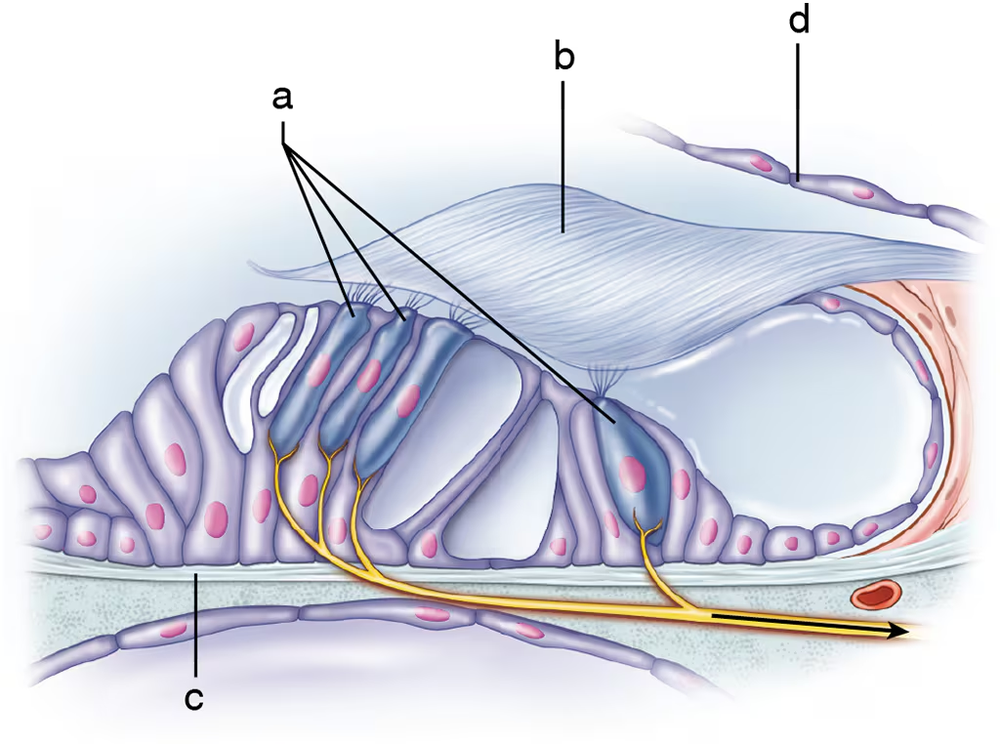 Back
BackProblem 1
Gustatory cells are:
a. Bipolar neurons
b. Multipolar neurons
c. Unipolar neurons
d. Epithelial cells
Problem 2
Alkaloids excite gustatory hairs mostly at the:
a. Tip of the tongue
b. Back of the tongue
c. Vallate papillae
d. Fungiform papillae
Problem 3
Cranial nerves that are part of the gustatory pathway include
a. Trigeminal
b. Facial
c. Hypoglossal
d. Glossopharyngeal
Problem 8
Which of the following are paired incorrectly?
a. Cochlear duct—cupula
b. Vestibule—macula
c. Ampulla—otoliths
d. Semicircular duct—ampulla
Problem 9
Movement of which structure triggers the bending of hairs of the hair cells in the spiral organ of Corti?
Problem 10
Sounds entering the external acoustic meatus are eventually converted to nerve impulses via a chain of events including:
a. Vibration of the eardrum
b. Vibratory motion of the ossicles against the oval window
c. Stimulation of hair cells in the spiral organ of Corti
d. Resonance of the cupula
Problem 16
Name the structures of the outer, middle, and inner ears, and give the general function of each structure and each group of structures.
Problem 17
Sound waves hitting the eardrum set it into motion. Trace the pathway of vibrations from the eardrum to the spiral organ of Corti, where the hair cells are stimulated.
Problem 18
Normal balance depends on information transmitted from a number of sensory receptor types. Name at least three of these receptors.
Problem 19
For each of the following descriptions, indicate whether it applies to a macula or a crista ampullaris: inside a semicircular canal; contains otoliths; responds to linear acceleration and deceleration; has a cupula; responds to rotational acceleration and deceleration; inside the vestibule.
Problem 21
Sylvia Marcus, age 70, recently had surgery for otosclerosis. The operation was a failure and did not improve her condition. What was the purpose of the surgery, and exactly what was it trying to accomplish?
Problem 22
Mrs. Garson has an immune disorder that causes dry mouth, and she complains to her doctor that she's lost her sense of taste. How might her symptoms be explained?

